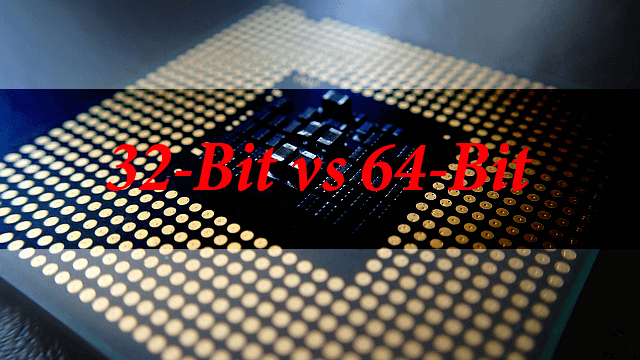The computing world today has been fast shifting to the 64-bit mode of architecture. Windows has carried out a lot of promotions to increase the usage of 64-bit Windows among households. But this topic has till date been unclear to many computer users.
If you have ever wondered about the difference between 32-bit and 64-bit Windows Operating System, today you will have your answer. In this article we help you understand the concepts of 32-bit and 64-bit computing in plain English, without any jargon.
About 32-bit and 64-bit OS :
Firstly let’s start from the very basics and understand what bits are.
What Is A Bit?
A bit is the smallest unit of information in any digital system. It takes a value i.e. either a 1 or 0. The total number of bits in a computer states its registry width. A registry is sort of database present in your computer which is quite frequently accessed. Learn more about Windows Registry.
Anyways the bigger the registry gets the more information it can handle. Due to which the important thing is the ability to handle memory increases. A 32-bit register can hold 232 = 4.2 billion addresses (from an address of 0000…. 32times to 1111….. 32times) and the maximum RAM limitation is just 4GB. While in a 64-bit registry, the number of addresses it can hold is 264 which is about a 17.6 billion gigabytes or 16.3 terabytes approximately. [Source: Wikipedia]
Simply, in a nutshell the 64-bit processor can access 4 billion times the memory than a 32-bit processor can do.
Operating Systems:
A 64-bit processor demands software which is of the 64-bit architecture. Keeping this in mind Windows and Apple have developed their operating systems, without which not much change can be felt between a 32-bit and 64-bit processor. Even you may be using a 64-bit operating system in case you have purchased your computer recently. There’s absolutely no doubt about it.
Also if at all you are trying to run a 32-bit software on your 64-bit Windows, there won’t be any problem with that. Except that the true capabilities of your CPU are left untested. But there opposite isn’t true. With a 32-bit operating system at hand you can run a 64-bit application and you know why.
The Adaption:
Applications including software, games etc. have already started taking advantage of the extensive memory and processing capacity of the 64-bit systems. Software are also backward compatible except the virus protection ones and drivers, so you can run any 32-bit application in a 64-bit environment without any headache.
Here is a compatibility table just assuring you what all a 64-bit CPU is capable of.
64- Bit Compatibility Table |
||||
CPU |
64-Bit |
64-Bit |
64-Bit |
64-bit |
Operating System |
64-bit |
64-Bit | 32-Bit |
32-Bit |
Application |
64-Bit |
32-Bit | 32-Bit |
64-Bit |
Yes |
Yes |
Yes |
No |
|
Hence a processor’s upgrade from the 32-bit to 64-bit makes things faster and better. That being said, if at all your RAM is less than 4GB with a 64-bit processor, you really aren’t making good use of your processor and the performance is tad normal. For applications including Image Editing, Video Editing, 3D rendering and High-End games the 64-bit architecture with a 8GB or 16GB RAM shows significant performance improvement.
If there is a comparison between a 32-Bit and 64-Bit Windows systems, you know the result now.
Also See: The Advantages And Disadvantages In 64-Bit Computing

